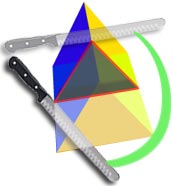Prisms
A prism has flat sides and the same CROSS SECTION all along its length !
| |||||
Try drawing a shape on a piece of paper (using straight lines!),
Then imagine it extending up from the sheet of paper,
- that's a prism ! | 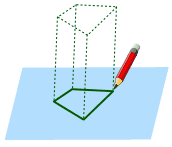 |
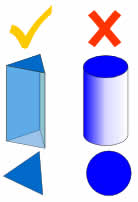 | No Curves!
A prism is a POLYHEDRON, which means the cross section will be a POLYGON (a straight-edged figure) ... so all sides will be flat!
No curved sides.
For example, a CYLINDER is not a prism, because it has curved sides.
|
These are all Prisms:
| Square Prism: | Cross-Section: |
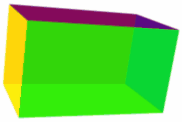 |  |
| Cube: | Cross-Section: |
 |  |
| (yes, a cube is a prism, because it is a square all along its length) (Also see RECTANGULAR PRISM ) | |
| Triangular Prism: | Cross-Section: |
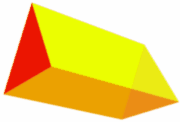 |  |
| Pentagonal Prism: | Cross-Section: |
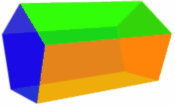 |  |
Regular and Irregular Prisms
All the previous examples are Regular Prisms, because the cross section is regular (in other words it is a shape with equal edge lengths, and equal angles.)
Here is an example of an Irregular Prism:
| Irregular Pentagonal Prism: | ||
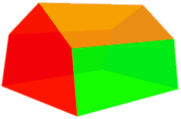 | 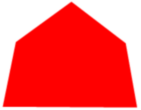 | |
| Cross-Section | ||
| (It is "irregular" because the Pentagon is not "regular"in shape) | ||
Volume of a Prism
The Volume of a prism is simply the area of one end times the length of the prism
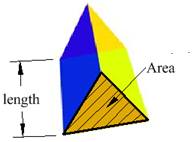 |
Volume = Area × Length
Example: What is the volume of a prism whose ends have an area of 25 in2 and which is 12 in long:
Answer: Volume = 25 in2 × 12 in = 300 in3
|
Other Things to Know
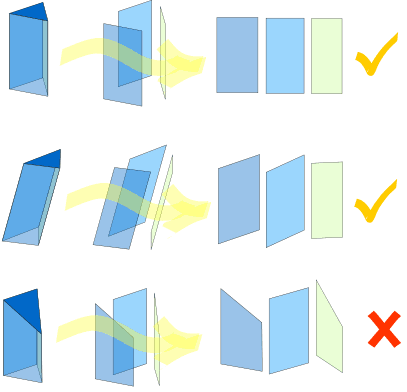 |
The sides of a prism are PARELLELOGRAMS (flat shapes that have opposites sides parallel).
A prism can lean to one side, making it an oblique prism, but the two ends are still parallel, and the sides are still parallelograms!
But if the two ends are not parallel it is not a prism.
|
